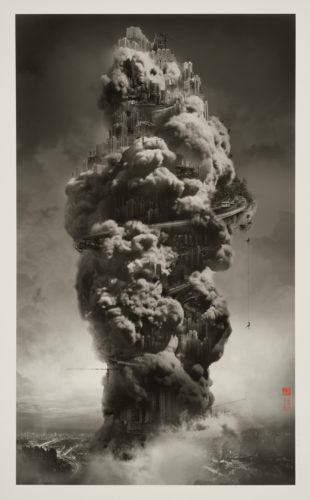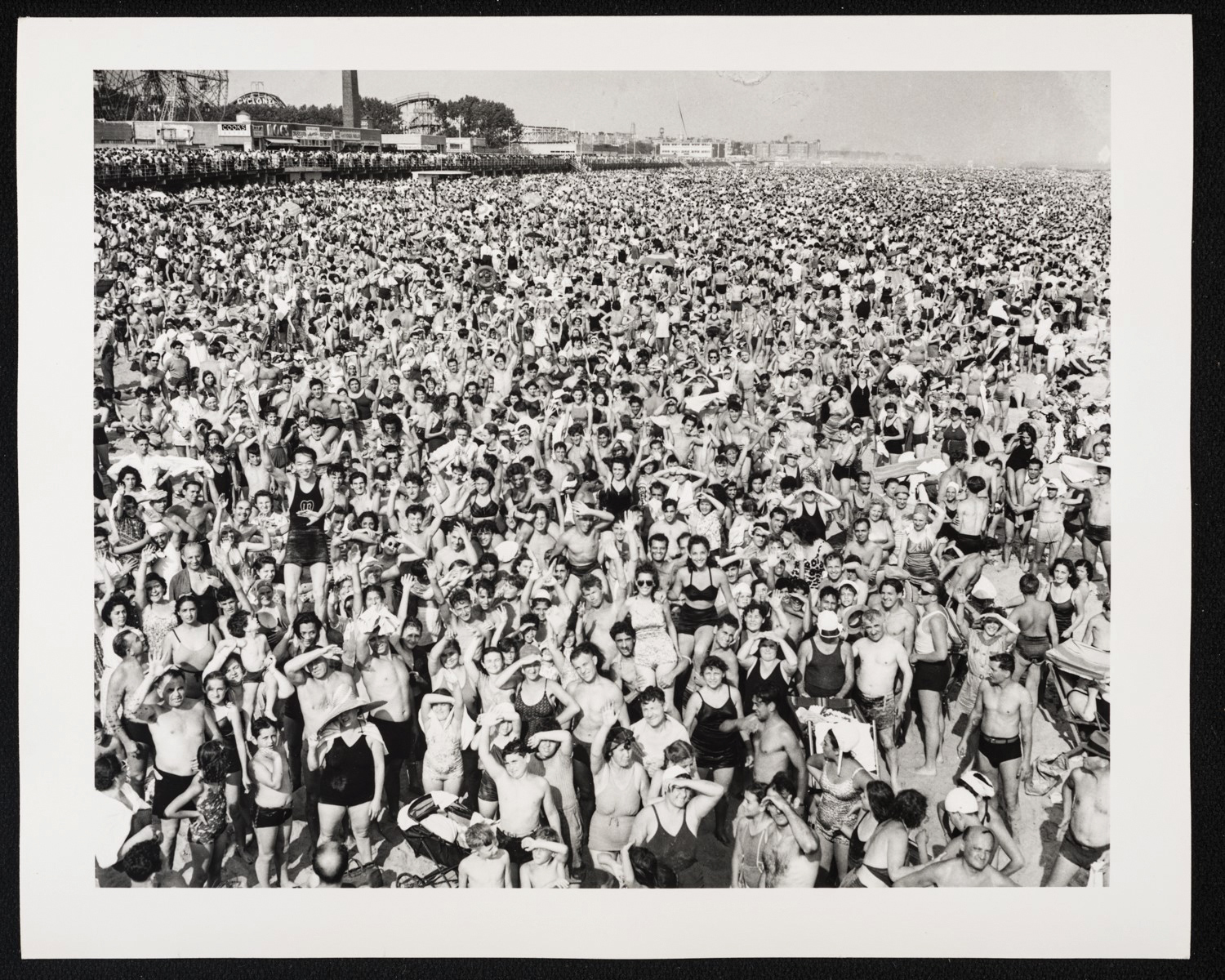
On Earth, a Fragile Existence, at the Jordan Schnitzer Museum of Art until April 16, aims for us to come to terms with the fact our future on this planet is not secured. Composed of mostly photographs, but also paintings, sculpture and video, this group show highlights the museum’s permanent collection and boasts works by artists of historical standing, such as Eadweard Muybridge (1872-1875) and Weegee, whose given name was Arthur Fellig (1899-1968), as well as local favorites such as Rick Bartow (1946-2016), Ashland artist Claire Burbridge and Eugene artist Olga Volchkova.
In a fittingly academic manner, considering the museum’s location on University of Oregon grounds, curators Danielle Knapp and Thom Sempere would like you to consider the art in relation to a series of questions that require critical thinking. The first is: “What is the current state of the natural world, and what is humanity’s responsibility to our environment?”
Some artists address this thematic question more aggressively than others. “Heavenly City #1” (2008) is a print by YANG Yongliang that shows a city, or many cities, being lifted off the earth in a massive, dark cloud. The cloud’s vertical orientation connotes the after effects of an explosion, but Anne Rose Kitagawa, JSMA’s chief curator of collections and Asian art and director of academic programs, points out the image is also reminiscent of traditional Chinese landscape painting as practiced by Ming (1368-1644), for example, in which “towering mystical mountains” are portrayed.
A tree, the subject of Oregon photographer David Paul Bayles’ photograph, seems commonplace in comparison, except that the top part of it is blurred. “Falling Tree No. 24,” from his Falling Forest series, captures the moment a tree begins to fall. Bayles worked as a logger before he went to art school. As a student he began seeing the falling of a tree differently than before.
Now he explains it this way: “There is a point where the opposing forces of energy are held in suspension, simultaneously ephemeral and eternal.”
He is, I think, trying to describe that moment when an outcome is as yet undecided. And isn’t that what this show is all about?
From practically its beginning, photography has been trying to capture things in motion, to freeze an image in order to analyze and understand. Among those artists most preoccupied with this highly scientific pursuit was Muybridge. He took a series of photographs of a horse in motion in 1878, the story goes, to resolve a bet regarding whether all the animal’s legs were ever off the ground at once. He showed the world they were.
After the success of The Horse in Motion, Muybridge aimed a camera at the way other animals moved, including birds. “Pelican Landing,” plate 775 from the photographer’s Animal Locomotion series, is a set of images showing the progression of a landing bird; it is included in this exhibit.
About halfway through the show, I can’t help but overhear the remarks of Eugenean Peter DeRiemer and his out-of-town friend Alex Kavutskiy, whose responses to the art are not framed by the curators’ questions as much as they are by jokes. The question comes to mind: Is it OK to have fun while contemplating the possible demise of the earth’s habitable environment?
Because of DeRiemer and Kavutskiy, the last part of my experience On Earth is more lively than the first. Then, before we part ways, Kavutskiy makes a request.
“Please put me in your article.”
Upon reflection, it’s a similar request to the one expressed in Weegee’s “Coney Island Beach” (1938 or 1939) by an enormous crowd waving at the camera. Responding, I assume, to the photographer’s attention, and by extension, ours.
Enlarge

The picture depicts what Weegee said was “a quiet Sunday afternoon” of a crowd of a million people or so trying to escape the summer heat of New York City. Sempere, co-curator and JSMA associate curator of photography, says Weegee had the “uncanny ability to show up at just the right moment to get the exact right photo that would jump to the front page.”
“Coney Island Beach” still jumps out at you. Though the sea of humanity represented may not speak directly to today’s environmental questions, it’s a terrific picture of us on Earth.